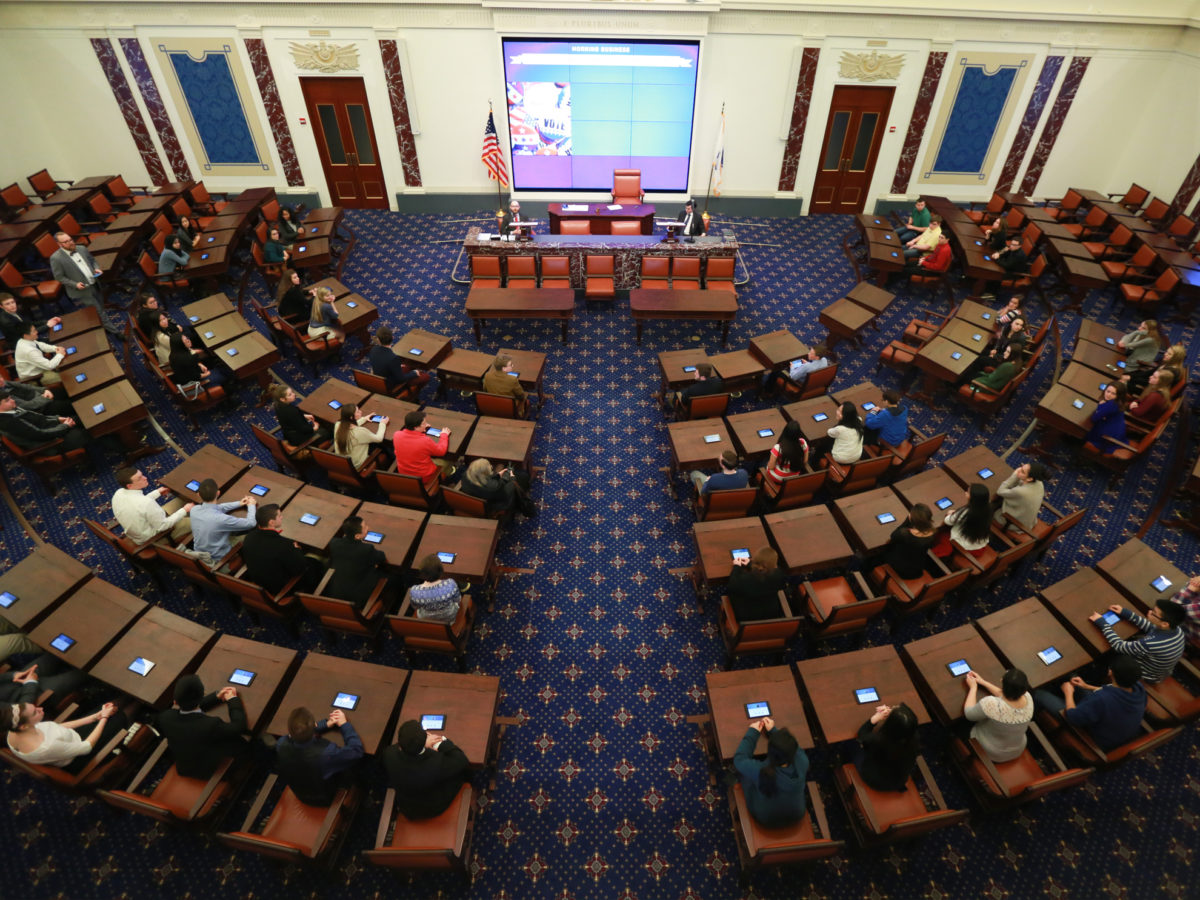The Edward M. Kennedy Institute for the Senate
The Edward M. Kennedy Institute for the United States Senate in Boston, Massachusetts doesn’t just tell you about the history of the Senate, it engages you in the experience of being a U.S. Senator. Tablet in hand, visitors interact with exhibits and each other, discussing, cutting deals and voting on legislation. Senator Kennedy envisioned a living space that would give visitors the chance to actively engage with the Senate and through that experience re-engage people in the political process. Senator Kennedy always said the Senate changed him. He wanted visitors to the Institute to have that opportunity as well.
ESI Design and the Edward M. Kennedy Institute brought Gigantic Mechanic on to design the experience at the heart of the Institute: the Senate Immersion Module (SIM). During this two-hour experience, groups of up to 100 visitors take on the role of U.S. Senators and try to forge legislation that tackles an important issue from immigration to healthcare to the Compromise of 1850. Through tablets and interactive screens, players learn about the states and parties they must represent. They have the chance to interview expert witnesses and nominees. They caucus, debate and horse trade. They deliver impassioned speeches. Finally participants must take a stand and cast their votes on the Senate floor.
Played in a full recreation of the U.S. Senate Chamber, the SIM brings learning to life through role-playing and gameplay. While aimed primarily at high school students, the SIM has been played with everyone from middle school students to a group of generals from around the world. Each time players dive into the game and leave with a renewed excitement and sense of civic engagement.
Gigantic Mechanic designed the SIM. We playtested the game with thousands of students around the country, constantly refining the experience and content. We brought in the Institute of Play to help us work with teachers and design curricular materials to use in the classroom both before and after the visit. Then we worked with Control Group and Richard Lewis Media Group to bring the game to life in media and software. Finally we worked closely with the Edward M. Kennedy Institute to stage and train staff to run the SIM.
Credits
- Mattia Romeo – Game Design
- Dan Nagler – Game Design, Research & Writing
- Matt Parker – Game Design
- Greg Trefry – Game Design & Project Management

